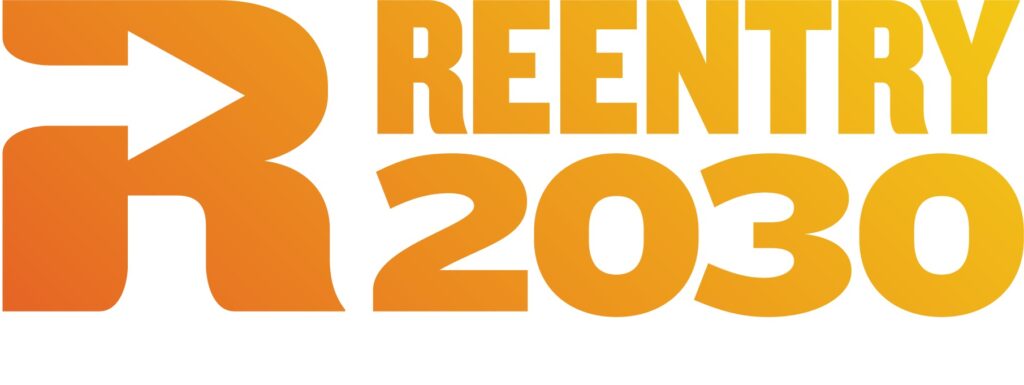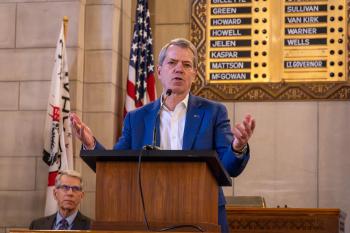
“Successful reintegration for every person with a criminal record.” That’s the goal of Reentry 2030, an initiative created by the Council of State Governments Justice Center, the Correctional Leaders Association and JustLeadershipUSA. And these organizations, along with the individual states that are joining the effort, are determined to do everything they can to make that happen.
The idea originally arose from discussions by members and partners of the Council of State Governments, a nonprofit, nonpartisan organization that is made up of state leaders and was established in 1933 to promote excellence in state government.
“For us, Reentry 2030 is trying to create a national movement. To change the dialogue around the country concerning what successful reentry looks like and ensure that every person released from prison is successful,” says Nina Salomon, the Council of State Governments’ deputy division director of corrections and reentry.
The CSG is currently recruiting individual states to establish goals and processes that will help those leaving prison achieve success. So far four states have joined the effort, and more are in the process of getting involved.
Reducing barriers to opportunities
“We hope to see a lower recidivism rate. Provide better access to Medicaid. Make sure that we’re dedicating the right level of investment toward successful reentry, and that it is working. To make sure that states can collect the data toward reentry. Reduce barriers to opportunities for individuals who are returning and scaling up what we know what works in terms of employment and housing. We want to see that statewide and across the country,” Salomon adds.

So far four states have signed on. Four additional states are expected to launch by early fall and CSG is taking with about 10 more states that are considering participating in Reentry 2030.
Why the year 2030?
The target date for the campaign was strategically chosen.
“We started this conversation in 2020 and were thinking about what progress could be made over the next decade. Coming out of the depths of Covid, when leaders had to focus on short term day-to-day strategies, we wanted to invite and support them to think about a timeframe over which bolder outcomes were possible. Setting our sights on 2030 gives enough time to set and achieve bold goals, including time for implementation and preliminary results, while also being near enough in the future to require action quickly,” Salomon says.
How Reentry 2030 is being carried out
The first step for this big and bold initiative was to get the word out. The CSG has done this through its relationships with state legislators and policy makers, and department of corrections officials, among others. In addition, it’s being promoted on Reentry 2030’s website, in newsletters, and at conferences and events.
“We’re also building up champions in the four states that have registered. They’re sharing what they’re doing and how Reentry 2030 can be a valuable tool to achieve their statewide visions,” says Salomon.
CSG offers assistance to states that participate
The Council of State Governments collaborates with the states that want to be part of Reentry 2030 from early in the process.
“They formulate the goals in terms of knowing best where their priorities are and what they want reentry to look like. And in terms of where their challenges are and where their strengths are,” Salomon says. “We work with them to find out where those priorities are and what a population-based numerical goal will look like in that particular area. We want to make sure it’s a goal that’s big and bold and that that they feel as a state is achievable.”

The nonprofit is providing tailored technical assistance and one-on-one support to help states achieve those goals. The CSG connects state leaders with those in other states that are already involved in the Reentry 2030 effort. It is also in the process of creating virtual academies to educate participants on various issues.
“In addition, we’re helping states increase the visibility and recognition of their current rehabilitation efforts and create additional momentums,” says Salomon. “We’re helping them showcase where they are. And we’re also helping them learn how to better collect data about reentry outcomes to see if they’re making progress on their reentry 2030 goals.”
The first step an interested state should take
If someone from a state is thinking about joining the Reentry 2030 movement, Salomon has a bit of advice on how to begin.
“Have some internal conversations with your stakeholders and partners within your department of corrections. Really make sure that reentry is a priority and then get in contact with us. We can brainstorm with you and help you move in the right direction. Have internal conversations and then have a conversation with us,” she says.
States that have signed on to the Reentry 2030 effort
As of June 2024, four states – Missouri, Alabama, North Carolina and Nebraska – are part of Reentry 2030.
Each of these states has created its own unique set of goals and the means to carry them out.
Missouri
Missouri was the first to sign on to Reentry 2030 – in April 2023 – led by Governor Mike Parson and Anne Precythe, the former director of the Missouri Dept. of Corrections. The state’s goals focused strictly on employment and declare that:
- 100 percent of those incarcerated who need career services will receive them.
- 85 percent of people who are incarcerated will be employed within 30 days after release.
- 80 percent of formerly incarcerated individuals will remain employed for at least nine months after release.
Since the official launch more than a year ago, Missouri has been busy. It put together an advisory team, which consists of representatives from 12 state departments who are developing a plan to achieve the state’s Reentry 2030 goals.
Missouri has also created six regional reentry teams to identify unique situations throughout the state and improve local reentry efforts. In addition, it is establishing reentry centers within its 19 correctional institutions to help people do everything necessary to prepare for release, from obtaining documents to developing job skills.
Alabama
The second state to be part of Reentry 2030, Alabama committed to the effort in October 2023.
Its goals are to:
- Reduce the Alabama recidivism rate by 50 percent by 2030. (It was 28 to 30 percent in 2023.)
- Increase the workforce participation of formerly incarcerated Alabamans by 50 percent. It intends to do this by expanding educational and employment opportunities and creating opportunities to gain experience in such high-demand fields as welding, tree trimming, forklift operations and electrical work.

North Carolina
North Carolina joined Missouri and Alabama early this year as a Reentry 2030 participant, with the signing of Executive Order No. 303 by Governor Roy Cooper.
The state has committed to:
- Creating the Joint Reentry 2030 council.
- Increasing the number of high school diplomas and post-secondary degrees earned by 75 percent.
- Offering greater access to behavioral health and substance abuse treatment.
- Making sure that upon release all people who are eligible obtain Medicaid.
- Expanding housing options in order to reduce homelessness among those in reentry by 50 percent.
Nebraska
Nebraska joined the Reentry 2030 effort on Feb, 1, 2024, which Governor Jim Pillen declared as Returning Citizen Reintegration Day.
Its goals are widespread and are dedicated to:
- Increasing GED completion among those incarcerated by 30 percent and enrollment in college courses by 50 percent.
- Boosting participation in vocational and life skills programs by 25 percent.
- Making sure that 100 percent of those incarcerated enroll in Medicaid.
- Providing support to ensure that at least 90 percent of those leaving prison will be employed within 30 days of parole placement.
- Creating a statewide reentry council.
“Launching Reentry 2030 in Nebraska confirms our commitment to rehabilitation and second chances. By setting bold goals, fostering collaboration, and embracing innovation, we aim to build a state where every individual, regardless of past challenges, can reintegrate with safety, intentionality and purpose. Nebraska leads the way in redefining success, ensuring the well-being of families and communities – the Nebraska Way,” says Governor Jim Pillen.
Editors note: Photographs courtesy of the Council of State Governments Justice Center.

